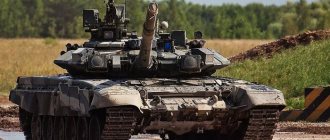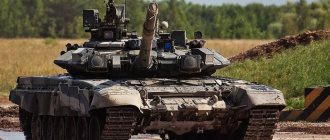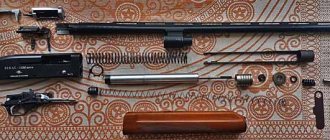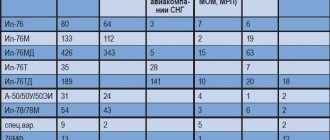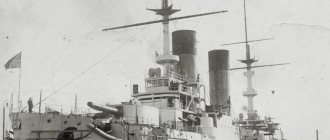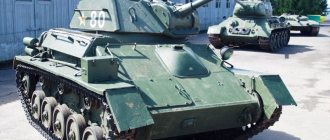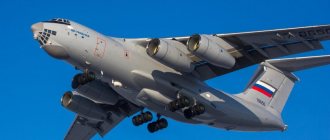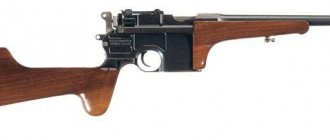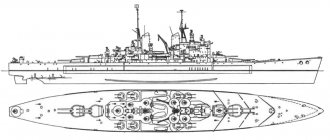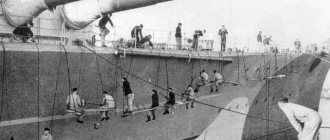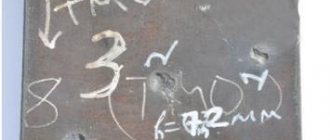ZIL-41047 is a representative class car in a limousine-type body. This model is the final machine produced in the USSR, which was created without any material and technological limit. The position of a public government limousine gave the design staff the right not to pay attention to the situation in the automobile market and the concept of “profitability.” Production started in 1985 and continued until 2002. The entire ZIL model range.
Car history
After Stalin died, armored cars fell into oblivion. New developments were not carried out and such cars were not used by the leadership of the party and the country. When Nikita Sergeevich Khrushchev came to power, armored vehicles were stored in various garages and places of previous deployment. They decided to destroy another share of such models due to lack of use.
After the change in politics, the machines that political people used also changed. Today there is an opinion that Nikita Sergeevich adhered to democratic views, when compared with Stalin, therefore the same “democratic” vehicles suited his image well. However, time has made it clear that armored versions should not be written off even in a fairly calm socialist hour.
As confirmation, one can cite the assassination attempt of one terrorist on Brezhnev in 1969, when suddenly, during ceremonial events with cosmonauts, he opened fire on 2 government vehicles. Although the head of state himself was not injured, since he was not driving at the front of the column, the driver of the first car was killed and some participants in the motorcade were wounded. One of the safest cars in the world was the Russian version called ZIL-4105 (“Armored Capsule”).
The car had three modifications that differed in the front body kit - ZIL-4105, ZIL-41051 and ZIL-41052. Before perestroika, American intelligence services were unable to uncover this secret. When the Union of Soviet Socialist Republics collapsed, they initially decided to purchase an old ZIL and explore it.
In reality, the whole armored sedan mystery was quite ordinary. Taking into account standard armoring technologies, it is expected that the standard structure will be strengthened with armor components. It is no secret that Western countries armor their vehicles by installing Kevlar sheets under the skins, which have good strength when opening fire from small-caliber weapons and resist blast waves quite well. But Kevlar cannot provide good protection against a more significant weapon.
Experts have calculated that the price of one such machine is 600,000 US dollars, but as is known everywhere, officials never spare any expense on their safety.
The Russian design team chose a different path - they decided to weld an armored capsule, and only then construct a car around it! Such a device is completely unsuitable for mass production; therefore, only 25 similar armored capsules were produced at the Kurgan enterprise. Of these, 5 designs were intended for fire tests. This unique machine from the Likhachev plant has the maximum degree of safety.
The designers created such a chassis structure that the car cannot be overturned. It should be noted that its armor (steel 68KhGSLMN with special additives) is the best in the world. The thickness of the armor ranges from 4-10 millimeters. Thickness of bulletproof glass: front - 43 millimeters, located on the sides and rear - 47 millimeters.
Just look at fuel tanks made from a large number of layers, which during breakdowns could independently tighten the holes and were fire and explosion proof. Their development and construction was carried out in the pilot production of the Steel Research Institute. The curb weight of the sedan, taking into account the purpose of the armored vehicle and the installed equipment, varied within the range of 5,160-5,225 kilograms.
And when 1985 came, now the relatively young (by the criteria of the Soviet past) M. Gorbachev became the General Secretary of the Central Committee of the Communist Party of the Soviet Union, and accordingly the leader of a huge country. Judging by the stated policy of perestroika, ZIL experts were inspired to modernize the state limousine ZIL-41045, which was produced at that time.
The need for the current update was determined more by political motives than by the technical part. The chassis, together with the power unit, was designed with a powerful design “margin”, which allowed for several more years without changing anything in components and parts. The bottom line was that Mikhail Sergeevich, if we compare him with past leaders, often visited foreign countries on official business and largely traveled around the Union.
It is clear that the car of a young, energetic and decisive representative of the USSR should have had “greater meaning” than the ceremonial protocol cars of its predecessors. In the Soviet Union, the newest vehicle of the country's leader, who proclaimed perestroika and reconstruction in all areas of citizens' lives, was supposed to represent certainty, the desire to move ahead and the irrevocability of reforms.
Abroad, they expected a simple thing from a sedan - for the new product to “make an impression.” Therefore, already in 1986 the debut ZIL-41047 was released. The improvements affected mostly the external design. The radiator grille lining began to look better, and instead of round headlights, they began to install square ones (Bosch).
They decided to return the turn signals to the corners of the wings located in front, and the stern lights occupied the entire area of the rear. The front side windows no longer had windows, and the exterior mirrors received a new housing and were installed not on the door part, but in the corner of the window.
As of 1986, ZIL-41047 was the longest and heaviest small-scale passenger car in the world.
Such small changes were enough to win everyone's attention from the new model. The technical department also did not sit idly by, but carried out individual improvements to the systems of the presidential sedan. The ZIL-4104 engine, which was a V-type, eight-cylinder, with two camshafts in the block heads, decided to modernize and use a contactless ignition system.
With the advent of 1988, the hydromechanical transmission, which was inherited from the previous version 41045, was also improved. The update affected the freewheel design and a number of adjacent elements, which made it possible to increase the strength of the device. In addition, the new product had wheels with a diameter of 16 inches.
The special-purpose version “Granit” was used as tires, which had a system that facilitated movement when the wheel seal was broken. This was achieved with the help of stronger tire sidewalls and a special gel located in the middle. Such a tire could withstand up to 7 bullet penetrations.
Given the importance of the president's new car, no one even thought about a possible manufacturing defect or design flaw. Unsurpassed quality was one of the most important requirements and was achieved through careful manual production, a large number of checks of certain components and each machine in general.
Such vehicles were assembled individually, using the slipway method: the car did not follow a conveyor belt from master to master, but employees of one or another department came to the car themselves as needed. The assembly time lasted about five and a half months. In one year, no more than 15-20 presidential sedans were produced. The body panels were made from oak templates by hand.
After that, they were installed on the vehicle, fitted in place, straightened and leveled using a tin alloy. Handwork and individual fitting of elements were used throughout. Since the models were aimed at a specific “buyer,” the sedans were distinguished by their filling, the placement of certain components, and the basis of the trim.
For painting, nitro enamel with a coating of 9-15 layers was used. Intermediate drying and polishing of each layer was used. The outermost layer was applied and polished only when the model passed run-in tests. Interestingly, any car after such a test could have a mileage of up to 2,000 kilometers.
Application of the machine
The main customer and operator of the vehicles was the Special Purpose Garage (GON), which provided the top management of the Soviet Union and then Russia with specialized transport. Until now, GON has been a structural subdivision of the Federal Security Service of the Russian Federation.
Government limousines were deployed to ensure the safe movement of the country's top officials, including their work during official international events. In particular, leaders of most foreign states on visits to the USSR and Russia were transported in domestic executive cars.
The final example of the serial ZiL-41047 built by the plant was the presidential limousine for official events, ordered by the administration of the head of Kazakhstan, Nursultan Nazarbayev. By 2009, there was an attempt to resume the piece assembly of cars. An unclaimed copy of modification 410441 (“convertible”) was sold to the fourth President of Ukraine, Viktor Yanukovych, for his personal garage, from which, in 2014, it was transferred as an exhibit to the Ukrainian “Museum of Corruption” in Mezhyhirya.
In Soviet times, providing one of the representatives of the highest party and state leadership with a car of the ZIL-4104 family as a service and personal vehicle was of an extremely prestigious nature, especially emphasizing the belonging of this person to the circle of bearers of the highest power. But after the collapse of the USSR, for the leadership of Russia that gained “independence”, such considerations over time completely lost their relevance. Nevertheless, GON continued to operate the ZIL-41047 until 2008.
An important detail should be noted: the mileage of each government vehicle had a clearly defined limit - 100 thousand kilometers. Upon reaching this indicator, the car’s speedometers were “written off,” accompanied by their complete dismantling. For this reason, so few cars of this class have survived to date.
ZIL-41047 on the streets of Moscow during the Russian era
Appearance
As is already clear from the photographs, the appearance of the presidential car is quite unusual. If you look at the photographs, you will immediately notice the 1.5-meter extended aft overhang, large hood and luggage compartment. After this, you can notice the presence of deep body paint.
The wheelbase is 3,880 millimeters, and it is so large that even the Mercedes S-class W140 and the new Mercedes W222 look small compared to the domestic model. As mentioned above, the front square headlights were produced by Bosch, and in addition to the injectors, they also had small “wipers”.
It is noteworthy that the external mirrors located in the corner of the glass were equipped with an electric drive. Unusually, the previous Mercedes (W140) with the W126 body indicator had no mirror on the right side at all. If we take the president’s car with the index number 41047, then the new car does not have rotating windows in the front doors.
Upon closer inspection of the new Soviet vehicle, you can see rubber plugs in the wings located in front. Such holes are intended for special pins called flagpoles. They are intended for mounting a flag and a similar part is available only for passenger cars from the Likhachev plant. GAZ 14 Chaika does not provide such equipment.
The desire to add integrity to the body is also noticeable in the gas tank neck covered behind the rear license plate. The tank itself has a volume of 120 liters. The nameplate installed on the hood is injury-proof and hides when pressed. The ride height does not fall below 170 millimeters.
Briefly about the model
The history of the ZIL-41047 car begins in 1985. Despite the fact that this model is quite “adult”, if you manage to see it on the roads now, you won’t be able to do without admiration. She looks truly amazing.
Interestingly, the production of each such executive limousine took 6 months. During the year it was possible to produce a maximum of 20 copies. And, naturally, the vast majority of them were published back in the days of the USSR. If you look closely at the model, you can see some similarities with its predecessor, which was car 41045. And indeed, the new ZIL limousine in those days appeared before the people as a deep modernization of 41045.
And he appeared for a reason. In 1985, the Soviet Union received a new leader. And he often traveled, and not only throughout the USSR. He needed a powerful, valiant and beautiful car. This is what ZIL-41047 became. Its length is 6,330 mm and its weight is 3,350 kilograms. It is not surprising that even today this car is the heaviest production sedan.
Interior
The arrangement and finishing of the interior has always been considered an important point during the development of executive vehicles. When comparing models with previous releases, the new product has undergone almost no changes in terms of equipment and aesthetics of the limousine interior.
The developers provided 7 seats inside the presidential car with 3 rows of seats: the middle row was installed with straps that were retracted into the partition between the VIP salon and the seats installed in front. The adjustable steering column can be tilted upward, which greatly simplifies the driving position of the vehicle.
The rear-mounted sofa could be equipped with an electric drive, which made it possible to adjust the backrest angle and the position of each seat. When upholstering the front seats, only leather was used, and the back row received plush or velor upholstery. The classic two-spoke steering wheel is tilt adjustable.
The driver's seat has different settings. It can be adjusted almost anywhere. When decorating the interior of ZIL-41047, liners made of natural walnut, and in some cases, mahogany were used. A climate control system is responsible for the climate situation inside the presidential limousine, one on the passenger side and the other on the driver’s side.
The presence of determal three-layer glass helps maintain the required temperature. It is interesting that the first models of the Soviet executive sedan had Belgian glass, all subsequent ones were domestic. The interior lighting is individual, as separate lampshades are installed on the ceiling and in the corners.
The lower edge of the door armrests was equipped with special lamps that light up when the doors are opened. Russian specialists decided to perform a “handbrake” in a rather unconventional way. To activate it, you need to use the foot pedal (the same principle applies to Mercedes).
The executive limousine ZIL-41047 has an excellent level of noise insulation, since the layer of material that provides it is applied 5 cm thick.
The controls for adjusting the electric drives of the partitions and window lifts are located on the upper plane of the armrests of the doors installed at the rear. The rear doors can be opened for both passengers and the driver from the straps. Buttons for setting the “music” system and power windows were installed in the armrest located on the right side.
The console, located in the center of the presidential limousine, has settings for air conditioning, loudspeaker, alarm system and basic music system. The compartment for the special communications unit was placed between the seats installed in front. The speed sensor, together with the tachometer, was placed in round wells, covered with cone-shaped glass, which completely prevents glare.
Front interior
- Multimedia complex with touch screen and feedback;.
- Navigation system.
- Panoramic camera.
- Remote engine start.
- Three-zone climate control with individual temperature settings for rear passengers, driver and front passenger.
- Front seats with memory functions, ventilation, heating and electrical adjustment in 14 directions.
Specifications
Power unit
Nowadays, a large number of car enthusiasts admire foreign vehicles with 5.6-liter V8 power plants on board, however, when compared with the ZIL engine, foreign versions look “toy-like”. The massive hood of the huge Soviet limousine hides a V-shaped, eight-cylinder, 16-valve, 7.7-liter engine.
This “engine” develops 315 horsepower, but that’s not all! It produces 608 Nm of torque from just 2,500 rpm, a figure that exceeds that of the Nissan GT-R and is similar to the new Jeep Grand Cherokee SRT. The latest model stands out among most sports cars, leaving them behind.
This power unit is powered by a four-chamber carburetor and extracts a spark from the spark plugs using non-contact ignition. Type of gas distribution mechanism drive – OHC. The block is aluminum, and the engine has two camshafts.
Each cylinder has a combustion chamber volume of almost a liter. Such engines are installed on Toyota Yaris or Daewoo Matiz. This “engine” allows a heavy limousine to accelerate to a speed mark of 100 km/h. in 13 seconds, and the maximum speed is 190 kilometers per hour.
Transmission
The torque from such a powerful engine was transmitted to the wheels by a three-speed hydraulic transmission on an “automatic” and a 3-speed gearbox of a planetary unit. Only rear wheels were provided as a drive. The cardan shaft received an intermediate support.
The continuous rear axle was equipped with a hypoid final drive. The gear selector was installed on the transmission tunnel between the front seats. The gearbox has a mechanized stopper in order to keep the car on the rise. It turns off automatically as soon as the car starts moving.
Chassis
At the front of the Soviet model they decided to install an independent, pinless suspension on wishbones, which also has an anti-roll bar. A 28 mm torsion bar installed along the frame, which acts on the lower arm, was used as an elastic part.
At the rear, a dependent suspension was used, where there are longitudinal asymmetrical semi-elliptic springs and reaction rods. Long leaf springs (1,550 millimeters) had a polyethylene-type spacer between the leaves. Both suspensions received telescopic shock absorbers.
Steering and braking system
In the role of the steering device, the experts decided to use a ball screw nut with a toothed sector. All this is complemented by a hydraulic power steering wheel. The braking system has 292.2 mm ventilated disc brakes at the front and 315.7 mm at the rear.
The hydraulic drive is of a dual-circuit type, each of which acts on the braking devices of 4 wheels. The parking brake is drum equipped. The drive is performed using the left pedal.
Safety
Armored models of ZIL 41047 were produced in only 14 units. Such vehicles provided confident safety to all passengers. Some parts of the government vehicle have armor thickness of 8 centimeters! The thickness of the glass is 8.5 centimeters! Even 7.62 caliber bullets with an armor-piercing hardened core cannot pass through them.
The car withstood a grenade explosion on the roof and even under the fuel tank. As mentioned above, the presidential limousine was not afraid of even punctured tires, which allowed it to leave the “dangerous place” as quickly as possible. It is also noteworthy that it is almost impossible to overturn a Soviet car - this once again eloquently demonstrates the high level of safety.
Basic equipment
- The 6.2L SFI power unit with an adaptive fuel management system and variable valve timing system produces 430 horsepower.
- Six-speed automatic transmission with electronic control system.
- Independent front suspension with a shock absorber and anti-roll bar located inside the coil spring, the rear suspension with a similar anti-roll bar and longitudinal springs.
- Hydraulic braking system with ventilated disc brakes, anti-lock braking system and vacuum booster.
Modifications of ZIL-41047
Modifications
| ZIL-41047 | It is a basic model with seven seats in a limousine body, wheelbase 3,880 millimeters (1985-2000) |
| ZIL-41041 | Produced from 1986 to 2000. The model is made on a limousine platform (41047) and is an escort car in a 5-seater sedan with a trimmed base to 3,300 mm. Due to the fact that the car is not so long (5,750 millimeters) and not so heavy (up to 3,160 kilograms), its dynamic data has increased. Officially, the construction of such vehicles has not been completed, however, in reality they are not produced. A total of 26 models were produced. |
| ZIL-41042 | Along with the design of the limousine, specialists were preparing for production its sanitary version - a station wagon with the index 41042. To stand out against the background of the state column, such vehicles were painted black. Because of this, they were often called the "Black Doctor". Despite popular opinions, the equipment of this modification was not suitable for the conditions of the reanimated car. ZIL-41042 was suitable for transporting important patients with necessary hospitalization. The vehicle is designed for a crew of 3 doctors and one patient, for whom a recumbent seat is provided. The body length was increased, and a superstructure was installed on top of the medical part of the interior. The aft door had 2 compartments: the one located at the top was raised, and the one at the bottom was folded back. The mass of the station wagon was 3.9 tons. The stern door, located on the left, was artificial, behind it there was a “spare” and a tool. The inside of the Soviet station wagon was finished with very high quality; even the stretchers were made using genuine leather. The medical station wagons produced over time on the "trolley" 41045 and 41047 had the same index - ZIL 41042. The limousines built on the "trolley" 41047 were distinguished by the presence of a monolithic rear door that rose upward. A total of 4 ambulances were produced. |
| ZIL-41043 | Represents a special communications vehicle, which was produced from 1980-1983 on a station wagon platform (41042). This design had a shielded electrical equipment system and a parabolic government communications antenna mounted in the roof. |
| ZIL-41044 Phaeton | With the onset of 1981, the Likhachev enterprise built a ceremonial phaeton with index 41044, which had an automatically folding top (the duration of lowering and raising did not exceed 20 seconds), and automatically “hiding” side window frames. The differences from the standard version were as follows: the car received a pair of doors, the right seat was missing, and a cabinet with a handrail was installed in the center of the interior. On top of that, the ZIL-41044 Phaeton was equipped with several microphones, as well as a radio station and antennas. A total of 3 similar “cars” were produced. |
| ZIL-41045 | This modification was manufactured from 1983 to 1985. After the arrival of the next Secretary General of the Central Committee of the Communist Party of the Soviet Union (1983), the limousine underwent cosmetic restyling of the external plan. It was decided to remove the shiny trim from the wheel arches, and the molding that ran along the threshold was placed higher on the door. The radiator grille, along with the headlights, was changed; the stern lights received a slightly different design. |
| ZIL-41046 | Served as a communications vehicle, produced on the ZIL-4104 “trolley”. From the outside, this performance did not differ in any way from the standard one. Version 41046 had shielded electrical wiring and “Caucasus” special communications technology. |
| ZIL-41048 | The car was produced in 1984 in the quantity of one copy, which was distinguished by its unique climate control. |
| ZIL-41049 | Introduces a special communications vehicle on platform 41047. In total, only 2 copies were produced. |
| ZIL-4105 “Armored Capsule” | This armored version of the vehicle had 3 versions. As described above, the so-called armored capsule was taken as the structure. The body itself was built around it. |
| ZIL-41072 "Scorpio" | It represents a special purpose security vehicle built in 1989. This version was equipped with wide running boards, external and internal handrails on the sides of the vehicle and inside it. The sunroof is suitable for "unforeseen circumstances". The Soviet modification had a design for instantly opening the stern window. The developers have provided a special interior layout using swivel chairs. A total of 8 similar machines were produced. |
Interesting Facts
The emergence of a new line of ZIL-4104 limousines could also be influenced by the new party secretary general, Leonid Ilyich Brezhnev, who was famous for his passion for cars, and by the time he took office, had a large collection of foreign cars.
An interesting fact about the body panels of the ZIL-4104 limousine - they were made using lead melting technology: after welding, a layer of lead alloy was fused onto them, which was then straightened with a special tool. Some articles write that this was done to protect against radioactive radiation - but this is just a misconception; in fact, the body was melted with lead only to give the surface an ideal appearance and eliminate defects.
Especially for L.I. Brezhnev, the interior of the ZIL-4104 limousine was made with red velor and gilded handles. For this purpose, the car body was even exported to England, since such technologies did not exist in the USSR. But for the most part, all ZiL salons were of the same type - this was done to simplify the replacement of a car with another for some reason. So passengers might not even notice that the car was different.
It is noteworthy that the ceremonial version of the ZIL-41044 limousine was painted only in the gray color of a general’s overcoat. According to the recollections of the workers, the general who accepted the cars personally applied the sleeve of his overcoat to the car and compared the shade. The interior of the front ZiL was made of yellow-red leather - that’s what Defense Minister D.F. decided. Ustinov.
The ZIL-4104 limousine served the Soviet country faithfully until its decline, after which it was undeservedly forgotten - officials of the “new” world preferred foreign Mercedes and Rolls-Royces rather than domestic cars.
But for some time the plant continued to produce limousines of the ZIL-4104 series for private individuals, and in 2010, the already half-empty plant received an order for new government convertibles for parades - they were assembled from the remaining bodies.
In 2013, production at the Likhachev plant stopped completely. Now the plant is almost completely destroyed, but the limousine assembly workshop has been preserved and has become separate - it continues to assemble and repair limousines from the remaining spare parts.
I would like to believe that the production of government cars will be resumed there, but most likely the ZIL limousines will soon completely fade into history, becoming another monument to the automotive industry of an irretrievably bygone era.
Advantages and disadvantages
Pros of the car
- Quite a pleasant appearance;
- High level of security;
- Excellent road stability;
- Powerful power unit;
- Solid dynamic characteristics, as for such a mass of a car;
- High-quality assembly;
- There is a lot of free space inside;
- Large luggage compartment;
- High-quality salon;
- Expensive finishing;
- High level of comfort;
- "Climate installation";
- Hydraulic power steering;
- Various adjustments of the steering column and seats;
- Good sound insulation.
Cons of the car
- Large dimensions;
- Considerable gasoline consumption;
- High cost due to small-scale production;
- The quality of the plastic used on the front panel leaves much to be desired;
- Inconvenient transmission tunnel.
Passenger part of the cabin
- Individual finishing using exclusive natural materials and precious wood, aluminum, carbon fiber.
- Seats with a wide range of adjustments, heating and ventilation.
- Electric footrest.
- Multimedia complex.
- Electric bar and tables.
- Automatic glass partition between the front and rear parts of the cabin.
The government limousine was one of the best luxury cars in the Russian automobile industry. In terms of characteristics, the ZIL-41047 was significantly superior to similar vehicles produced by foreign automakers.
Let's sum it up
It’s a pity, but the company was unable to find buyers, so even small-scale production was stopped. Many officials today give more preference to famous foreign cars than to Soviet manufacturers. But despite all this, at its age, the ZIL-41047 was one of the safest cars in many countries. The car has a good and pleasant appearance, a stylish front end and large dimensions.
An acceptable ride height allows the vehicle not to worry too much about the quality of the road surface. Once inside the car, at first you may feel as if you are in a foreign car and only the steering wheel emblem reminds you that this presidential limousine was built by the Likhachev plant.
By the way, the steering wheel has a hydraulic booster, which makes driving a bulky car much easier, and the steering column can be adjusted to the preferences of any driver. Pleased with the presence of real wood and pleasant interior lining. It is also impossible not to notice the comfortable and pleasant seats, which have received various adjustments.
Inside there is plenty of free space everywhere, especially in the second row. The doors are wide enough, so getting in and out of the car is not difficult. The luggage compartment also has a lot of useful volume. The technical side of the limousine received a powerful power plant, which allows such a large and heavy car to be dynamic.
Separately, it is worth mentioning the high degree of security, which was specifically aimed at the top officials of the state. For a long time, there simply was no such car, since special events were even held where foreign specialists tried to turn the limousine over, but they failed. Thick metal and window armor made it possible to get out of the most difficult situations and save the lives of important passengers.
It is also important that many different modifications of special vehicles were built on this platform, which were also often found in motorcades or on special missions. Today such cars can be found in museums or in the garages of private collectors. Such a car will long be remembered as a fast, comfortable, safe and prestigious limousine for government officials.
We advise you to read the article: ZIL - the history of the auto giant
And Brezhnev is driving them
Leonid Ilyich was a passionate motorist and loved to drive himself. Which did not please his guards at all. As a passenger, the Secretary General most often rode in the front seat, next to the driver. The whole country saw this in television reports.
Leonid Brezhnev loved to ride next to the driver.
Leonid Brezhnev loved to ride next to the driver.
ZIL-41047 photo
Read further:
Aurus limousines decided to be produced in the United Arab Emirates
Cars of Russian presidents are up for sale
The fourth incarnation of the Skoda Octavia
Chevrolet Corvette C2 StingRay
Anyone willing to pay $55,000 for a well-kept version of a 1991 BMW M5?
